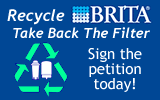Inasmuch as any of us seeks to tread lightly on the earth in our day-to-day life, it's usually just that: in our day-to-day life. But what about in our death?
Reading the July issue of National Geographic, I was stunned by some statistics about what gets buried along with the deceased in the U.S. each year: 30 million board-feet of casket wood, including some from exotic, possibly endangered, trees; 90,000 tons of steel, enough to rebuild the Golden Gate Bridge, and then some; 1.6 million tons of concrete (for burial vaults); and upwards of 800,000 gallons of embalming fluid, more than enough for an Olympic-size pool. Whatever happened to ashes to ashes, dust to dust?
As it happens, a movement exists that advocates for a return to simpler end-of-life practices. "The goal then and now is the same: to allow the body at death to rejoin the elements it sprang from, to use what remains of a life to regenerate new life," writes Mark Harris, author of Grave Matters: A Journey Through the Modern Funeral Industry to a Natural Way of Burial, in his blog.
Proponents of green burials are attracted to the idea of making their last act on the earth a sustainable one. Eco-friendly approaches conserve natural resources (decedents are lain to rest in shrouds or biodegradable caskets or crematory urns) and avoid the use of toxic embalming chemicals like formaldehyde (dry ice may be used to preserve bodies for memorial services). They also tend to cost much less than conventional burials.
But where it really gets interesting is interment location. The Green Burial Council has developed a certification program for cemeteries that emphasizes environmental stewardship and seeks to ensure that burial land remains burial land. To attain its highest-level certification, a cemetery must be owned or protected by a conservation easement held by a government agency and/or conservation-oriented nonprofit. Taking it a step further, the council has been meeting with land trusts and conservation groups to promote the use of burial as a conservation strategy. "Burial is another layer of protection," Green Burial Council executive director Joe Sehee explains in Grist. "It consecrates the land and offers another barrier to development."
Not that burials have to occur on land. Scattering ashes at sea has long been an established practice. There is even such a thing as a memorial reef, a structure that does double duty as a container for a loved one's ashes and an artificial reef to provide habitat for marine life.
But whether on land or on sea, the theme is the same: to seek harmony with the earth in death as in life.


